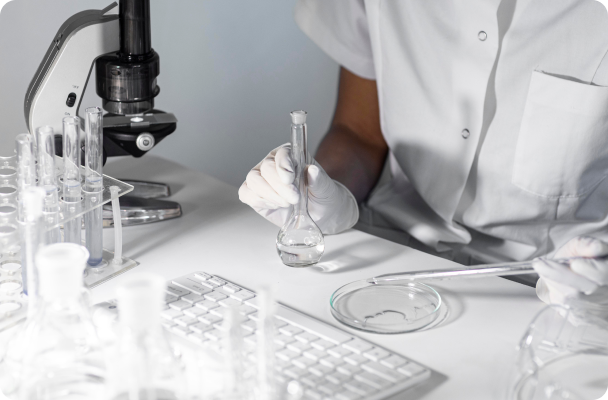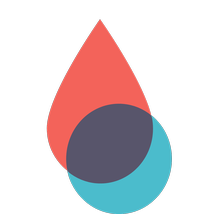Home › Biological sample › Infectious diseases › Fungal
Fungal biological samples
For research applications
The development of drugs and diagnostic tests for the treatment and detection of fungal infection requires conducting studies on biological samples obtained from patients infected with fungal.
Here's a brief overview of various infectious diseases caused by fungal species and how the service provided by Labtoo contributes to accelerating R&D projects in the pharmaceutical industry.


Are you looking for biological samples from patients with fungal?
What are the different types of fungal infections?
Fungi, also known as mycetes, constitute a distinct group of organisms, not belonging to either the animal kingdom or the plant kingdom. They are ubiquitous in the human environment, present in the ambient air, on the skin, and in the intestinal flora. Generally, two main forms of fungi are distinguished: yeasts and molds. Although most fungi are harmless, some can be pathogenic to humans.
Fungal infections are classified into two main categories: primary infections and opportunistic infections. These infections can then be categorized as localized or systemic depending on their severity.
Primary infections
These fungal infections can affect anyone. Among the most common are coccidioidomycosis, histoplasmosis, blastomycosis, and paracoccidioidomycosis.
These species are not present in Europe and are endemic to different regions of America, Asia, Africa, or Australia. However, due to the slow multiplication of these species, individuals traveling to a foreign country may be exposed to contamination and develop symptoms only several years later.
Opportunistic infections
These infections exclusively affect individuals with weakened immune systems. Among the most common opportunistic fungal infections are candidiasis and aspergillosis.
Localized infections
These infections generally affect a single region of the body, such as the nails, skin, mouth, nose, or vagina. They are often benign and typically respond quickly to treatment. Anyone can be affected by this type of infection.
Systemic infections
These are much more severe, involving the spread of fungi to internal organs. Leading to often fatal septicemia.
These infections are mainly opportunistic, meaning they are caused by fungi present in the environment but normally controlled by the immune system.
Severe cases primarily affect immunocompromised individuals. Although rarer, it is important to note that systemic infection can occur in a person with normal immunity, depending on the duration and burden of integrated infectious elements.
| Pathogenic Fungi | Specific Characteristics | Associated Symptoms |
|---|---|---|
| Candida albicans | Yeast |
- Oral thrush (oral candidiasis) - Genital infections (vaginal candidiasis) - Skin or nail infections |
| Aspergillus spp. | Molds |
- Respiratory infections (pulmonary aspergillosis) - Skin infections - Fungal sinusitis |
| Cryptococcus spp. | Yeast |
- Cryptococcal meningitis - Pulmonary infections - Neurological symptoms if disseminated to the CNS |
| Histoplasma capsulatum | Yeast |
- Fever/cough/fatigue - Weight loss - Respiratory symptoms (dyspnea, chest pain) |
| Coccidioides spp. | Molds |
- Fever/cough/fatigue - Chest pain - Myalgia - Skin rash |
| Blastomyces dermatitidis | Yeast |
- Fever/cough - Chills - Night sweats - Chest pain |

Explore Labtoo's Service for Your Biological Sample Research
Labtoo assists you in sourcing biological samples from patients infected by fungal. Our team manages the entire project of transferring biological materials from inception to sample delivery.
- Feasibility assessment of sample availability or clinical collection from referenced clinical centers
- Validation of regulatory aspects
- Establishment of a contractual framework
- Dispatch of desired samples under appropriate conditions
- Transfer of associated clinical data
- Additional analytical and experimental services
Types of available samples
Fresh tissues
Dermal samples are frequently obtained from skin eruptions caused by fungal infection. Tissues from deeper infected areas are also preferred samples for research.
Frozen tissues (OCT and FF)
Similarly to fresh tissue, once the tissues are cleared for research, the clinical site can freeze and keep the frozen tissue samples at -80°C or in liquid nitrogen for ulterior use.
FFPE Tissues
Pathologists typically embed the biopsies and resections in paraffin. FFPE blocks of infected tissues can be used later for research.
- Whole Blood: from patients with fungal
- PBMC (Peripheral Blood Mononuclear Cells)
- Serum/Plasma
- Leukapheresis
- Urine
- Respiratory samples
- Stool
- Other
Typical associated clinical data
-
- Age
- Gender
- Ethnicity
- Detection Method
- Serological result
- Bacterial Load
- Follow-up Treatment
- Simptomatology
- Medical Imaging
- Positivity/Negativity for certain Infections
- Other Data (upon request)

Labtoo identifies clinical sites that can prepare and transfer sample collections tailored to your specific project needs.
Contact our team to discuss your project.
Send your request to our team:
Symptoms of fungal infections
The symptoms of a fungal infection can vary depending on the location of the infection, the type of fungus involved, and the severity of the condition. Here are some typical symptoms associated with fungal infections in different parts of the body:
Skin infections
Skin rashes, redness, itching, formation of red or scaly patches, presence of blisters or pustules, peeling skin…
Nail infections
Change in color, texture, and thickness of the nail, detachment of the nail from the nail bed, weakening of the nail, pain around the nail.
Respiratory tract infections
Cough, shortness of breath, chest pain, coughing up discolored or bloody sputum, fever, and fatigue.
Genital infections
Itching and irritation, abnormal, thick, and/or foul-smelling discharge, burning during urination, pain during sexual intercourse, redness and swelling of the genital area.
Systemic infections
Persistent fever, fatigue, loss of appetite, muscle pains, and more specific symptoms depending on the organs affected.

Diagnosis and treatment of fungal infections
When suspicion of a fungal infection arises, the physician conducts an interview with the patient to explore their travel history, particularly in regions exposed to a risk of fungal infection, aiming to assess the likelihood of a primary infection. Additionally, the physician inquires about any potential immune problems or recent antibiotic treatments that may predispose to opportunistic fungal infection.
Subsequently, the diagnosis is confirmed by collecting a biological sample from the patient, followed by culture on an appropriate fungal growth medium. The type of sample collected is determined based on the presumed location of the infection. For example, a skin or nail sample is taken for skin infections, while sputum or bronchoscopy may be necessary for lung infections. Blood tests are also conducted to detect the presence of specific antibodies to fungi or to identify genes specific to certain types of fungi using molecular biology techniques.
The choice of treatment depends on several factors, including the species of fungus involved, the location of the infection, and its stage of progression.
Treatment of fungal infections involves the use of antifungal medications. These medications can be administered topically in the form of ointments, orally in the form of tablets, or intravenously. Antifungals belong to several distinct families, including polyenes, which target the fungal cell membrane, azoles, which inhibit ergosterol synthesis, echinocandins, which act on the fungal cell wall, and antimetabolites, such as flucytosine, which interfere with fungal DNA synthesis by inhibiting thymidylate synthase.
In more severe cases, such as abscesses or deep tissue infections, excisional surgical intervention may be necessary to remove infected tissues.
Complications during a fungal infection
Invasive fungal infections represent a clinically high-risk category characterized by the invasion of the body's tissues by fungi beyond their usual colonization sites. This phenomenon can lead to systemic infections and increase the risk of septicemia. Immunocompromised individuals are particularly prone to such infections. Furthermore, severe sequelae may occur when sensitive organs such as the eyes, kidneys, lungs, or liver are affected.
Antifungal resistance also poses a growing problem in the medical field. This resistance is often attributable to the limited spectrum of action of these antifungal agents against a variety of fungal organisms. This issue complicates the management of fungal infections and requires special attention in the selection and use of antifungals to ensure their clinical efficacy.




